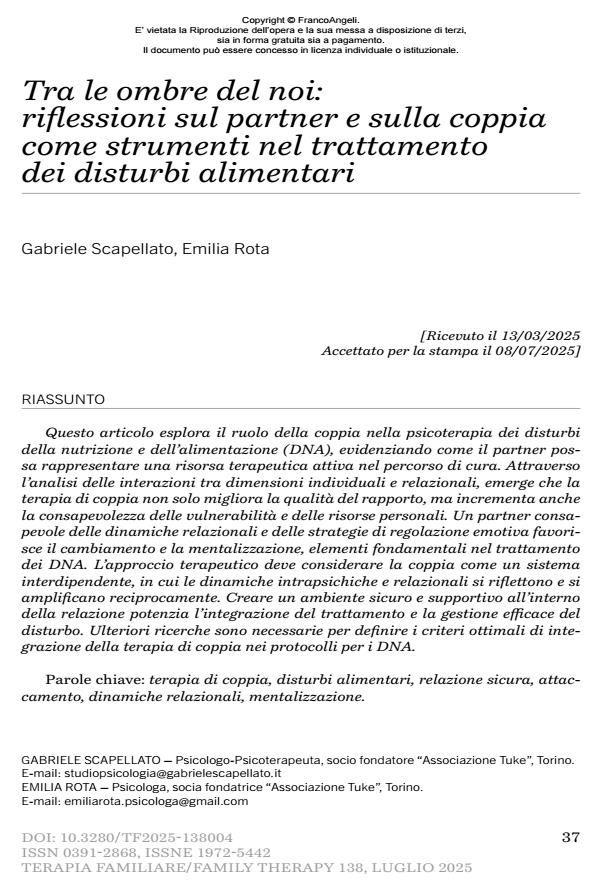Between the Shadows of Us: Reflections on the Partner and the Couple as Tools in the Treatment of Eating Disorders
Journal title TERAPIA FAMILIARE
Author/s Gabriele Scapellato, Emilia Rota
Publishing Year 2025 Issue 2025/138
Language Italian Pages 19 P. 37-55 File size 158 KB
DOI 10.3280/TF2025-138004
DOI is like a bar code for intellectual property: to have more infomation
click here
Below, you can see the article first page
If you want to buy this article in PDF format, you can do it, following the instructions to buy download credits

FrancoAngeli is member of Publishers International Linking Association, Inc (PILA), a not-for-profit association which run the CrossRef service enabling links to and from online scholarly content.
This article explores the role of the couple in psychotherapy of eating disorders (DNA), highlighting how the partner can serve as an active therapeutic resource throughout the treatment process. By analyzing the interactions between individual and relational dimensions, it becomes clear that couples therapy not only enhances the quality of the relationship but also increases awareness of personal vulnerabilities and strengths. A partner who is mindful of relational dynamics and emotional regulation strategies facilitates change and mentalization, which are critical in treating eating disorders. The therapeutic approach must view the couple as an interdependent system, where intrapsychic and relational dynamics mutually reflect and amplify one another. Establishing a safe and supportive environment within the relationship enhances treatment integration and effective disorder management. Further research is needed to determine the optimal criteria for incorporating couples therapy into protocols for eating disorders.
Keywords: couple therapy, eating disorders, secure relationship, attachment, relational dynamics, mentalization.
Gabriele Scapellato, Emilia Rota, Tra le ombre del noi: riflessioni sul partner e sulla coppia come strumenti nel trattamento dei disturbi alimentari in "TERAPIA FAMILIARE" 138/2025, pp 37-55, DOI: 10.3280/TF2025-138004